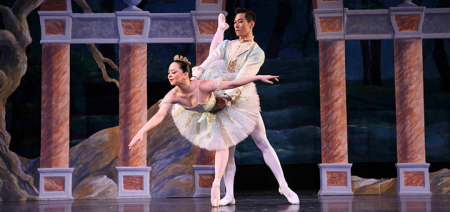TILTING AT WINDMILLS: The Brontë Award For Best Character – Part 1 … Sherlock Holmes, Frankenstein, Quasimodo …
Published:
June 14th, 2024
By:
Shelly Reuben

Whenever I am introduced to an unforgettable character in a novel, I find myself murmuring, “I nominate Shane (or Johnny Nolan or Edmond Dantès) to receive an Academy award for…”
Then I remember.
There are Academy Awards for screen plays, cinematography, costumes, musical scores, and so on. But there is no category for characters in books.
Hmm.
So, I thought and I thought and I thought. After several weeks of deliberation, I came to the conclusion that, although overall literary achievements are honored by Nobel Prizes, Pulitzer Prizes, and Edgar Awards, none of them pry a character loose from its moorings to celebrate his or her existence outside the confines of a specific book.
Therefore, I decided to formulate such an award myself. My first impulse was to name it after Charles Dickens, because he created such a parade of memorable souls – Uriah Heep, Ebenezer Scrooge, Miss Havisham, Tiny Tim, Fagin, and on and on and on. But the National Court Reporters Association beat me to it with their Charles Dickens Award for the Preservation of the Written Word – to which one can only respond, “Court reporters? Well … good for them!”
So again, I thought and I thought and I thought. Finally, I decided to name my award after two writers who imagined some of the most compelling pretend people in literature. Since I could not pick one sister over the other, I hereby announce the creation of the annual Charlotte and Emily Brontë Award for Memorable Characters in a Novel.
For short: The Brontë Award.
Over time, I may develop more categories, but for now, there are only two:
BEST CHARACTERS FROM BOOKS IN A SERIES
BEST CHARACTERS IN STAND-ALONE NOVELS
Beginning with Books in a Series (and this year’s winners come from novels written very long ago, or less long ago, or recently long ago), we are going to snatch and grab directly from the mystery genre with the best of the best.
SHERLOCK HOLMES, by Sir Arthur Conan Doyle: Not only did this brilliant detective codify investigative methodology for armchair detectives – as well as inspiring real-life detectives – the stories are beautifully written. Sherlock Holmes was distinctive without being affectatious, and all of his idiosyncrasies are integral to his character. Endearing, shocking, and inspiring are his cocaine addictions, his violin, his attention to details, his voluminous knowledge, his disguises, his arrogance, his kindness, his persistence, his marvelous verbal explosions --“I am a brain, Watson. The rest of me is a mere appendix” – and his long nose.
HERCULE POIROT and MISS MARPLE by Agatha Christie: Also, a gifted writer (Christie can “draw” an unforgettable character in less than a sentence), her Belgian refuge and spinster busybody are compulsively readable. Like Sherlock Holmes, their eccentricities have become crown jewels of our culture. Miss Marple is old, frail, incurably curious, benignly cynical – “Human nature, dear, is very much the same everywhere”” – sternly kind, and perpetually knitting … none of which hides her incredible powers of deduction. Whereas Hercule Poirot is defined principally by his “foreignness,” his fluctuating French accent, his “little gray cells,” his vanity (who could forget his mustaches and his patent leather shoes?), his loyalty to his friend Hastings (Christie’s deliberate or inadvertent homage to Conan Doyle’s Dr. Watson), his morality – “I do not approve of murder” – his aversion to discomfort, and his fanatical obsession with symmetry. And it all works.
Outside the mystery genre, but also memorable (can’t you see him pounding his fists against his chest and roaring?) we have TARZAN by Edgar Rice Burroughs. “I am Tarzan of the apes. I am yours. You are mine. We live here together always in my house … You are Jane Porter … Tarzan of the apes loves you.”
Need I say more?
Moving on to characters in Stand-Alone Novels:
FRANKENSTEIN’S MONSTER by Mary Shelley … who was only 19 years old when she wrote Frankenstein. That fact alone makes me want to bang my head against the wall with envy. When I was 19, I still had training wheels on my brain. Although her monster is the character everyone celebrates and emulates – in Halloween costumes, in movies, books, stories, and plays – “Frankenstein” was actually the name of the mad scientist who created him. I could say more about the beloved, if flawed, creature who murdered innocents and terrorized entire villages, but I don’t have to. Ever since he was born from bits and pieces of corpses dripping off the tip of Mary Shelley’s pen, her monster has been and will remain ubiquitous.
DRACULA by Bram Stoker: Another brilliant nightmare, but drawn from centuries-old mythology instead of from pure imagination, is Count Dracula, the ultimate seductive, self-transforming (is he a bat? A wolf? A mist?) blood-sucking Transylvanian vampire. The plot is just marvelous, and remember, this book also introduced us to RENFIELD – the certifiable lunatic who ate bugs and vermin to absorb their life force. I copied the novel’s epistolary style for my book JULIAN SOLO, so I don’t know if I deserved the Edgar nomination I received for my novel, or if it rightfully belongs to Bram Stoker.
QUASIMODO and ESMERALDA by Victor Hugo. Quasimodo, portrayed perfectly by Charles Laughton in the 1939 movie version of The Hunchback of Notre Dame, is memorable as the deformed, deaf, and vilified hunchback and bell ringer in the Notre Dame Cathedral in Paris.
In his description of one of the most physically grotesque characters ever written, Hugo tells of “that little left eye stubbled up with an eyebrow of carroty bristles, while the right was completely overwhelmed and buried by an enormous wen; of those irregular teeth, jagged here and there like the battlements of a fortress; of that horny lip, over which one of those teeth protruded, like the tusk of an elephant…”
In contrast, Hugo also gives us the gypsy dancer, Esmeralda. “Whether … a human being, or a fairy, or an angel” an observer could not at first decide. “She was not tall, though she appeared to be from the slenderness and elegance of her shape … She danced, whirled, turned round on an old Persian carpet … and every time her radiant face passed before you as she turned, her large black eyes flashed lightning.”
Victor Hugo wrote both characters with such galvanic energy that each has come to symbolize the worst … and the best. Quasimodo: the essence of ugliness. Esmeraldo: the epitome of wild and exotic beauty.
For next week’s winners of the Charlotte and Emily Brontë Award for Memorable Characters in a Novel, we move on to Charles Dickens, Alexander Dumas … and more. So, stay tuned!
Copyright © Shelly Reuben, 2024. Shelly Reuben’s books have been nominated for Edgar, Prometheus, and Falcon awards. For more about her writing, visit www.shellyreuben.com
Author: Shelly Reuben - More From This Author
Comments






